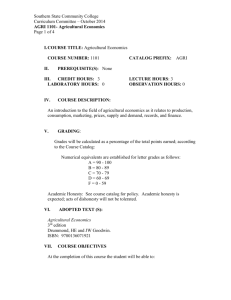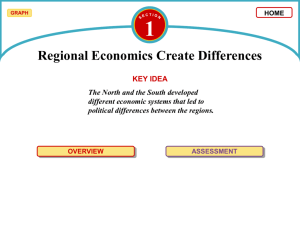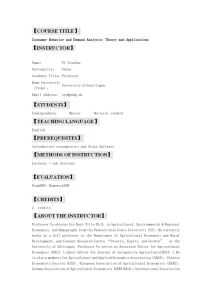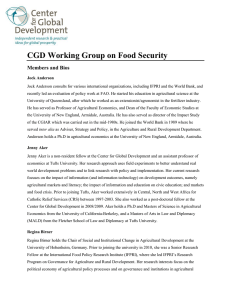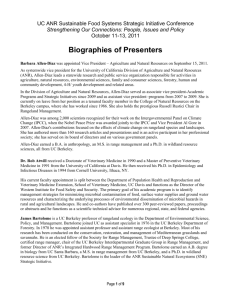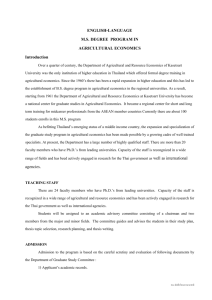As a Mode of Living - Economic and Political Weekly
advertisement
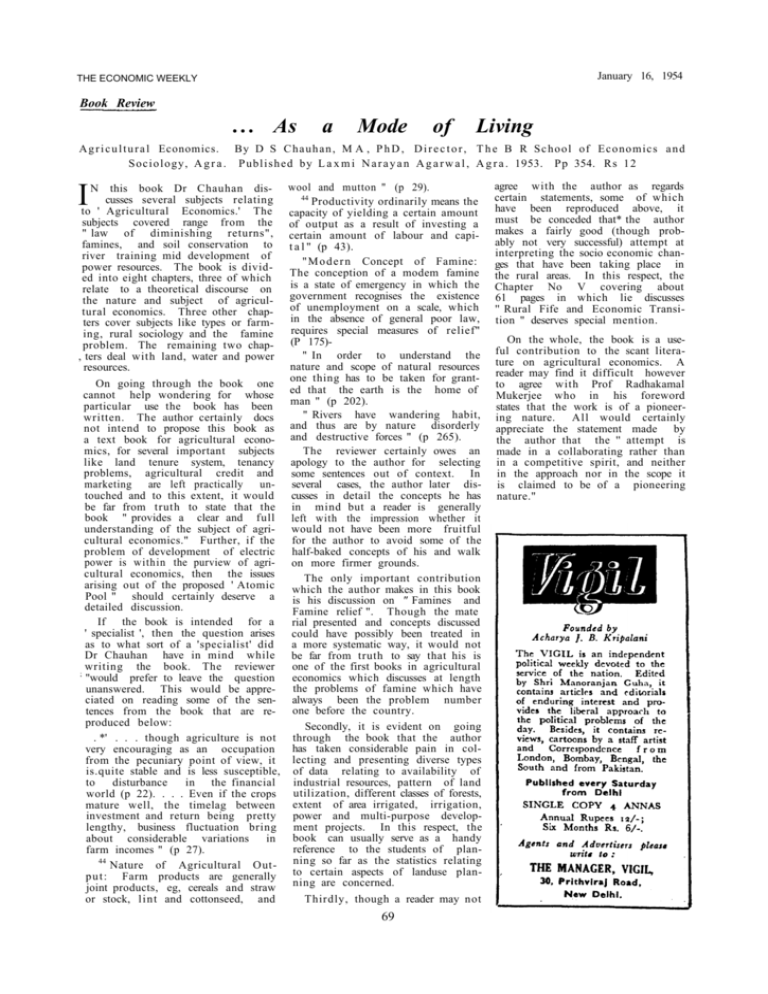
January 16, 1954 THE ECONOMIC WEEKLY Book Review . . . As a Mode of Living A g r i c u l t u r a l Economics. By D S C h a u h a n , M A , P h D , D i r e c t o r , T h e B R School of Economics a n d Sociology, A g r a . Published by L a x m i N a r a y a n A g a r w a l , A g r a . 1953. Pp 354. Rs 12 wool and mutton " (p 29). 44 Productivity ordinarily means the capacity of yielding a certain amount of output as a result of investing a certain amount of labour and capit a l " (p 43). " M o d e r n Concept of Famine: The conception of a modem famine is a state of emergency in which the government recognises the existence of unemployment on a scale, which in the absence of general poor law, requires special measures of relief" (P 175)" In order to understand the nature and scope of natural resources one thing has to be taken for grantOn going through the book one ed that the earth is the home of cannot help wondering for whose particular use the book has been man " (p 202). " Rivers have wandering habit, written. The author certainly docs not intend to propose this book as and thus are by nature disorderly a text book for agricultural econo- and destructive forces " (p 265). mics, for several important subjects The reviewer certainly owes an like land tenure system, tenancy apology to the author for selecting problems, agricultural credit and some sentences out of context. In marketing are left practically un- several cases, the author later distouched and to this extent, it would cusses in detail the concepts he has be far from truth to state that the in mind but a reader is generally book " provides a clear and full left with the impression whether it understanding of the subject of agri- would not have been more fruitful cultural economics." Further, if the for the author to avoid some of the problem of development of electric half-baked concepts of his and walk power is within the purview of agri- on more firmer grounds. cultural economics, then the issues The only important contribution arising out of the proposed ' Atomic which the author makes in this book Pool " should certainly deserve a is his discussion on " Famines and detailed discussion. Famine relief ". Though the mate If the book is intended for a rial presented and concepts discussed ' specialist ', then the question arises could have possibly been treated in as to what sort of a 'specialist' did a more systematic way, it would not Dr Chauhan have in mind while be far from truth to say that his is writing the book. The reviewer one of the first books in agricultural ; "would prefer to leave the question economics which discusses at length unanswered. This would be appre- the problems of famine which have ciated on reading some of the sen- always been the problem number tences from the book that are re- one before the country. produced below: Secondly, it is evident on going . *' . . . though agriculture is not through the book that the author very encouraging as an occupation has taken considerable pain in colfrom the pecuniary point of view, it lecting and presenting diverse types is.quite stable and is less susceptible, of data relating to availability of industrial resources, pattern of land to disturbance in the financial world (p 22). . . . Even if the crops utilization, different classes of forests, mature well, the timelag between extent of area irrigated, irrigation, investment and return being pretty power and multi-purpose developlengthy, business fluctuation bring ment projects. In this respect, the about considerable variations in book can usually serve as a handy reference to the students of planfarm incomes " (p 27). 44 Nature of Agricultural Out- ning so far as the statistics relating p u t : Farm products are generally to certain aspects of landuse planjoint products, eg, cereals and straw ning are concerned. Thirdly, though a reader may not or stock, lint and cottonseed, and I N this book Dr Chauhan discusses several subjects relating to ' Agricultural Economics.' The subjects covered range from the " law of diminishing returns", famines, and soil conservation to river training mid development of power resources. The book is divided into eight chapters, three of which relate to a theoretical discourse on the nature and subject of agricultural economics. Three other chapters cover subjects like types or farming, rural sociology and the famine problem. The remaining two chap, ters deal with land, water and power resources. 69 agree with the author as regards certain statements, some of which have been reproduced above, it must be conceded that* the author makes a fairly good (though probably not very successful) attempt at interpreting the socio economic changes that have been taking place in the rural areas. In this respect, the Chapter No V covering about 61 pages in which lie discusses '' Rural Fife and Economic Transition " deserves special mention. On the whole, the book is a useful contribution to the scant literature on agricultural economics. A reader may find it difficult however to agree with Prof Radhakamal Mukerjee who in his foreword states that the work is of a pioneering nature. All would certainly appreciate the statement made by the author that the '' attempt is made in a collaborating rather than in a competitive spirit, and neither in the approach nor in the scope it is claimed to be of a pioneering nature."





